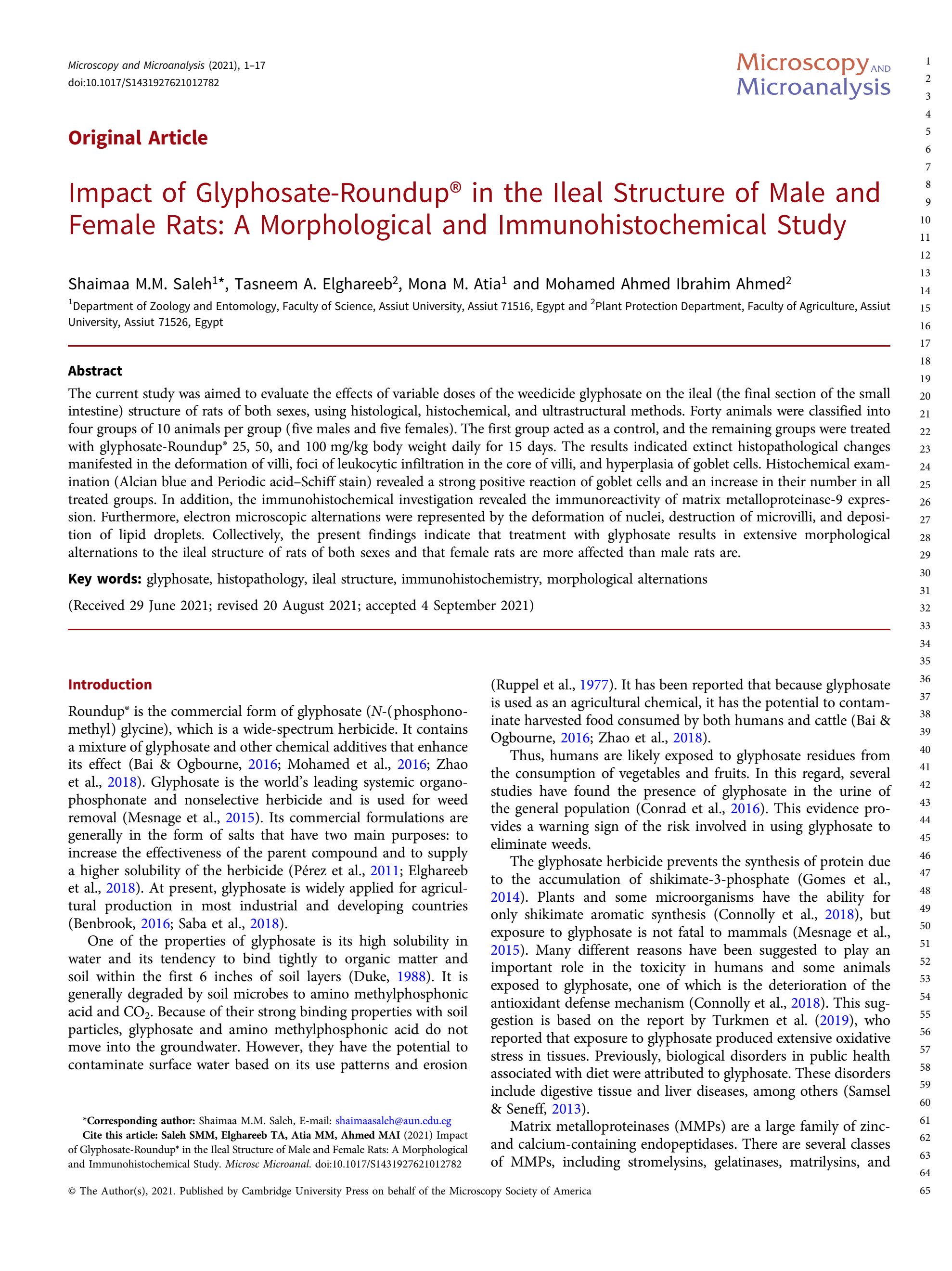Impact of Glyphosate-Roundup in the Ileal Structure of Male and Female Rats: A Morphological and Immunohistochemical Study Get access Arrow
Abstract
The current study was aimed to evaluate the effects of variable doses of the weedicide glyphosate on the ileal (the final section of the small intestine) structure of rats of both sexes, using histological, histochemical, and ultrastructural methods. Forty animals were classified into four groups of 10 animals per group (five males and five females). The first group acted as a control, and the remaining groups were treated with glyphosate-Roundup® 25, 50, and 100 mg/kg body weight daily for 15 days. The results indicated extinct histopathological changes manifested in the deformation of villi, foci of leukocytic infiltration in the core of villi, and hyperplasia of goblet cells. Histochemical examination (Alcian blue and Periodic acid–Schiff stain) revealed a strong positive reaction of goblet cells and an increase in their number in all treated groups. In addition, the immunohistochemical investigation revealed the immunoreactivity of matrix metalloproteinase-9 expression. Furthermore, electron microscopic alternations were represented by the deformation of nuclei, destruction of microvilli, and deposition of lipid droplets. Collectively, the present findings indicate that treatment with glyphosate results in extensive morphological alternations to the ileal structure of rats of both sexes and that female rats are more affected than male rats are.

 Do you have any questions?
Do you have any questions? 

